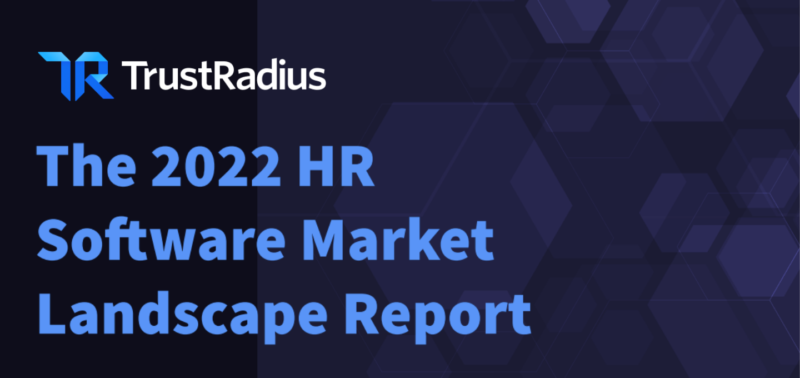B2B Connection
Information and resources for technology buyers
Pricing is a key consideration for most software buyers. If you’re looking to improve business decisions with marketing intelligence, pricing plans can have an important impact on costs and on your ability to build successful marketing strategies, increase market share, and grow at scale. Marketing campaigns that track costs improperly can endanger your whole business. What TrustRadius Research Says Pricing for Marketing Intelligence Software will vary depending on data sources, feature set, number of users, and payment structure. Software offering cloud-based lead generation or in-depth industry information will typically have a higher price range than tools focused on digital marketing, market research, or web analytics. Access to sophisticated competitive intelligence tools will also increase costs. While many vendors will provide detailed pricing plan information, others require buyers to contact them for customized pricing. Free trials and free versions are available, but you are unlikely to get most of the features you’re looking for. Paid versions typically range from around $75 to $500 per month, though customized enterprise plans will be more expensive. To give buyers a more complete picture of what to expect, we’ve put together a complete pricing breakdown for four top-rated Marketing Intelligence Software in 2022. Product Price […]
Ukraine is a nation of strong and resilient people. We wish all Ukrainians safety and strength during this extremely difficult time. We stand with them and their country.
When you create a website as an individual, startup, or small business web accessibility isn’t always at the top of your to-do list. Major corporations hire experienced developer teams and have their own legal teams and policies set in place. Small teams not so much, which leaves you exposed to lawsuits if you don’t have an accessible website to people with disabilities. We’re going to explain the laws around web accessibility and tips and tricks to answer the question, is my website accessible? What is Web Accessibility? Web Accessibility is the practice of making digital content accessible for people with disabilities just as it’s accessible to everyone else. The World Wide Web Consortium, better known as the W3C offers an amazing introduction to web accessibility, as well as resources to meet accessibility requirements. For an in-depth exploration of web accessibility see our enlightening article here. The Americans with Disabilities Act and Rehabilitation Act of 1973 The ADA is a law that has been around for 32 years, since July of 1990. It’s based on the Civil Rights Act of 1964, and is enforced by multiple different federal agencies. There were amendments (ADAAA) made to the law in 2008 (in effect […]
Web accessibility is a concept that can revolutionize your company’s connection with consumers in unfathomable ways. Web accessibility standards can have a reputation as something you’re forced to abide by because of the Americans with Disabilities Act (ADA). Instead, you should see it as a powerful solution to optimize user experience, brand reputation, and visibility Web accessibility is built on the concept of equal access for everyone. The more effort put into creating accessible content, the more demographics you can reach. Web Accessibility Explained Web accessibility means ensuring that everyone whether they’re blind, deaf, or neurodivergent, can use your website/web platform. This includes necessary accommodations for those with disabilities that would otherwise lose out or misunderstand the content on your site. There can be nothing hindering potential consumers and their connection to your product/information. There are 4 principles of web accessibility, which are sometimes referred to with the acronym POUR. The principles are as follow. 1. Perceivable The way people see the world changes for each individual. This means making your website “seen” through all possible senses relating to the virtual world. They should be able to see it, hear it, and touch it (i.e. mobile phones and tablets). Perceivable […]
Digital viruses are extraordinarily expensive. The most costly virus in history cost an inflation-adjusted $52 billion. Every year, businesses spend around $55 billion dealing with viruses. It’s no surprise antivirus software has emerged as a massive industry over the past decades. Just like real diseases, including the one that I’m sure you’ve heard about over the last two years, digital viruses change. Antivirus software must evolve, or become irrelevant. Here are the most important statistics in the antivirus industry, some market news, and breaking trends for 2022. Top 21 most interesting Antivirus Statistics The global cybersecurity market was valued at $132.94 billion in 2021 (Mordor Intelligence 2022). 77 % of Americans currently use antivirus software. (Security.org 2021) Only 5% of antivirus users had plans to switch security providers in the foreseeable future. (Security.org 2021) If it were measured as a country, cybercrime would be the world’s third-largest economy after the U.S. and China. (Cybersecurity Ventures 2021). 40 percent of people without antivirus software are open to installing it on their devices in the next 6 months. This is nearly DOUBLE the number from January 2021. (Security.org 2022) 24% of antivirus users said identity theft protection was their most appealing feature […]
Backing up data as a part of your organization’s insurance policy or industry regulations entails more than just making a copy of everything. When designing an effective data center backup strategy, you should take yourself through a journey with the Five Ws and H: Who? – Managing data backup in-house or working with a vendor? What? – Backing up all of your organization’s data, or only the most vital? What about endpoint data? Where? – Storing backups on-premise or off-site? When? – How often are you backing up your data? Why? – In-house security policies or legal obligations or both? How? – Traditional backup or via the cloud? While much attention is given to the who, what, where, why, and how of data backup, not as much attention is given to the “when”, or when you should perform backups, and how often they should be done. It’s easy to take the importance of this question for granted, especially when you’re working with a data center backup vendor who offers management of the service. However, it is becoming common for vendors in this space to provide users with the choice of how often their data is backed up. Data loss can […]
As technology has rooted its way into our day-to-day existence, education has been changed. Long gone are the times of thumbing through an Encyclopedia. With information at the tips of our fingers, learning is now boundless. Improving education is a huge issue for our society. Test scores, our perceived performance against different nations, and different elements have pushed education to the bleeding edge of national legislative issues, directly behind healthcare reform. Technology can be utilized to improve teaching and learning and help our students be successful. Tech helps education in many ways, including utilizing: Digital Simulations And Models Online learning Improved communication Vast information resources Better assignments Self-paced learning More Fun Learning Online collaboration Improved education access While everyone would love to see smaller schools and class sizes, technology cannot do that physically. However, technology can be a “force multiplier” for the teacher. Through the use of learning management systems (LMS) students can access online resources to get assistance on demand beyond the physical reach of their teacher. Technology can also extend education in another way. Education doesn’t stop toward the finish of the school day. Students can access teachers, resources, and assignments via the web whenever and wherever they […]
The home landline may be on its way out, but analog telephones are still alive and well in the business world. That’s changing too, though: Voice over Internet Protocol (VoIP) phones are a popular replacement for voice calls on both traditional phones and cell phones. What is VoIP? VoIP stands for Voice over Internet Protocol. It’s a broad term for technology that sends your phone call through an internet connection instead of a phone line. VoIP phones and apps let you make phone calls from anywhere with an internet connection. You can call any phone number from a VoIP phone. It doesn’t matter if the recipient uses a traditional phone system, a smartphone, or another VoIP phone. There are multiple ways to use VoIP. Some services offer dedicated VoIP phones that look similar to traditional telephones. Apps that let a mobile device call through a VoIP service, also known as “softphone” apps, are common as well. Many providers also have PC software that lets you use an existing headset to make calls. How Does VoIP Work? All VoIP systems use the Internet Protocol (IP) to send voice data. IP is the set of rules that defines how to split, track, […]
Companies of all sizes use marketing intelligence to help them make the best business and investment decisions. Marketing Intelligence Tools combine market research and competitive analysis to help businesses target customers and position themselves competitively. They can also help build awareness of user sentiment regarding competing products. In short, these tools are designed to give organizations the information they need to match customer expectations ahead of the competition. For small businesses and freelancers who may be on a tighter budget, having access to quality free marketing intelligence tools can be a game-changer, as automation, artificial intelligence, and machine learning capabilities become increasingly widespread. Larger companies can also use freemium versions to test the software solution, acquiring premium packages if the product integrates well with company workflows. Here are some of the best free tools for marketing intelligence in 2022. Best Free Tools for Competitor Analysis in 2022 By tracking competitor activities, businesses can gain a broad understanding of what they’re up against. Competitor analysis leverage business intelligence and product intelligence to give you an accurate assessment of the competitive landscape. Competitor analysis tools can help you answer the following questions: How am I performing against the competition? How are products […]
As with all other aspects of work, Covid-19 changed the HR industry drastically. Major shifts in remote work and the Great Resignation forced HR professionals to spend more time recruiting, onboarding, and offboarding.
It’s an inevitable part of operating a business: eventually, you’ll have to start posting on social media. Maintaining a social media presence is more than a simple checkbox step in establishing your business’s credibility. 54% of social media browsers use social media to research products. Your small business needs to draw these browsers in with engaging posts and quick replies to turn them into buyers. A good social media marketing tool can help you quickly make strong social media content. Your Small Business’s Social Media Marketing Strategy Small businesses have a great advantage in the social media landscape. It’s easier to show your brand’s personality and make genuine connections when your company has yet to reach Buy-n-Large proportions. Marketing professionals at small businesses wear many hats and are often unable to give all their attention to social media. Enter, social media marketing software. A social media marketing tool will allow you to access all your social media accounts in one place. You can schedule posts ahead of time and send them throughout the month. This is extra important when you can only carve out a chunk of time for social media work once every couple of weeks. You can also […]
Today, if you search for firewalls, you will see a combination of hardware and software firewalls marketed to small and medium-sized businesses (SMBs). Both are valuable, but they serve different purposes depending on your needs. We will look at the difference between hardware and software firewalls and determine which firewall offers the best protection for your company. What are the differences between hardware & software firewalls? Hardware firewalls allow you to protect your entire network from the outside world with a single physical device. This device is installed between your computer network and the internet. A hardware firewall monitors packets of data as they are transmitted. The firewall then blocks or transfers the data, according to predefined rules. Dedicated hardware firewalls require advanced IT knowledge to install and usually require a dedicated IT employee or department to monitor and manage once installed. Therefore, hardware firewalls are usually utilized by large companies or companies where security is of utmost concern. It should be noted that most routers sold today include basic firewall capabilities, but these products target the home or SMB user. For those looking for enterprise-level hardware firewalls, click the button below. Compare this to software firewalls that provide internal […]
Security breaches are up 67% over the last 5 years, according to Accenture. The rise in breaches indicates a growing gap between cyberattacks and the enterprise’s ability to defend against them. The key first step in protecting your enterprise is deploying a firewall that can filter huge amounts of traffic without sacrificing network performance and speed. According to reviewers on TrustRadius, the best firewalls for enterprise are Cisco ASA, Fortinet FortiGate, Palo Alto Networks Next-Generation – PA Series, Cisco Meraki MX, and Zscaler Internet Access. 5 Top Firewalls for Enterprises This list is curated from the Enterprise TrustMap of the firewall software category on TrustRadius. The Enterprise Firewall TrustMap is generated based on the intersection of buyer interest, trScore, and the percentage of products’ ratings and reviews that are from enterprise users. They are listed below according to the volume of enterprise-level ratings and reviews each product has earned. #1 Cisco ASA Best for Cisco users who prioritize low maintenance You’d be hard-pressed to discuss the firewall market without featuring Cisco. In the case of enterprise users, the ASA line stands out for its edge protection capabilities and low barrier of entry, particularly if your enterprise already lives in a […]
If you want to try out some free animation software before splurging on paid plans, you’re in luck. Free animation software is a viable choice for professional animators, beginners, hobbyists, and indie studios who work on tighter budgets. Beloved animation studios like Studio Ghibli use free animation tools to produce their major works, so why can’t you? Below, we’ll highlight 12 of the best free animation software. These tools are not just glorified video editors or gif-makers, but software that will actually allow you to create animations from the ground up. They can also be used completely for free, and not just as part of a limited-time free trial. #1 Animaker Animaker is a video-making platform that allows users to make both live-action videos and animated videos. Some of its key features include specialized tools for creating video infographics, 2D animations, and collaborative animated shorts. This is a drag-and-drop video maker for personal, educational, and professional use. The character animation is extremely simple, but will be poorly suited to more advanced original creative projects. Users can use an impressive array of stock footage, pre-built characters, and a host of quality of life tools. The latter includes easy resizing for popular […]
In a world dominated by Microsoft, Oracle, and Amazon, it’s easy to overlook the bounty of free database management tools. But the bounty is real! When you need safe, reliable data management, chances are there’s an open-source or free solution that will fit your needs. Understanding the functionality and limitations of the best free database management tools will help you make the right decision. We selected five contenders with unique advantages: PostgreSQL Neo4j RavenDB MongoDB CockroachDB If you’re absolutely unfamiliar with databases, this video is a great introduction to get you started. Three Types of Databases We chose databases from three broad categories: relational, document, and graph databases. Here’s a simple explanation of each type: Relational databases store data in tables, similar to an Excel spreadsheet. These databases need a schema—a set of very strict rules—to define each table. The schema keeps data firmly organized and separate. Developers use SQL (Structured Query Language) to create and use these databases. Non-relational databases are collectively called NoSQL databases. Document databases store data in chunks, called “objects” or “documents.” Each object is a bundle of related data, like a user’s profile or a product. An object can also contain links to other objects. […]
Whether your business is large or small, marketing intelligence can give you a leg up in an increasingly competitive business world. Marketing intelligence refers to the insights, stats, or data that help businesses position products and services within their niche industry. Let’s take a closer look at what marketing intelligence is and why it’s important. Why Marketing Intelligence Matters Marketing intelligence is all about seeing the big picture, while also exploiting specific data sources to gain a competitive advantage over rival firms. By following market intelligence best practices, businesses can gain actionable insights into their existing market. They can also acquire the necessary knowledge to break into a new market, whether that means rebranding or expanding overseas. For larger companies with several product lines, marketing intelligence will be more complex and even more indispensable. Benefits of Marketing Intelligence In general terms, we can break the benefits of marketing intelligence down into a knowledge trident that involves self-discovery, market understanding, and customer understanding. Self-Discovery It’s hard to excel at anything without knowing what you do best. Identifying strengths, weaknesses, opportunities, and threats (SWOT analysis) will help you develop business strategies that play to your strong points. These strategies will help you […]
Companies large and small have learned the hard way that Excel won’t cut it for their accounting needs. Case in point, Chase’s $2 billion loss due in large part to errors in manual Excel spreadsheets. SaaS companies, in particular, have accounting and budgeting needs that generic accounting software struggles to support. For instance, tracking Monthly Recurring Revenue is essential to many subscription-model SaaS companies. It’s also incredibly difficult to calculate manually in a tool like Excel. Other Features that would be crucial for SaaS companies include: Prebuilt MRR reporting Subscription billing/invoicing Cash flow forecasting Payment integrations CRM integrations Uncapped transactions volume Cloud-based software Some of these features are fairly easy to get across all enterprise-level tools in today’s software market. Others are harder to come by– which is why we’ve identified only 3 top accounting tools and an additional list of point solutions that can help SaaS firms meet their accounting and budgeting needs. The Best Accounting Software Specifically for SaaS Companies The following products are highlighted because they offer SaaS-tailored tools and rank highly on the Accounting Software TrustMap—a dynamic grid that measures TRScore and the interest of B2B buyers. They are ordered according to the number of ratings and […]
If this is your first foray into the world of call centers and contact center technology, a critical first step is understanding which software products are available. For new contact center businesses, nothing’s more frustrating than investing in an inbound call center solution only to realize your agents need an outbound contact center platform. Worse still is realizing your new on-premise software will need to be replaced with a cloud-based solution within the next year. There are a range of different types of call or contact centers that may be more or less appropriate for your business: Call Centers Contact Centers Inbound Centers Outbound Centers Cloud-based Centers On-premise Centers Multichannel Centers Omnichannel Centers Before investing the time and money into searching for, purchasing, and implementing software, make sure you’ve found the contact center product that will best match your current and future needs. If you are looking for the hottest stats and trends in the contact center world, we have you covered. Click the button below to learn more. 4 Comparisons to Consider Before You Start Taking Calls Not all contact center technology is equipped for the full range of call center activities. Conversely, software that has an exhaustive list […]
Cloud management platforms (CMP) are the ultimate reins to cloud computing chaos. Imagine tracking, automating, and provisioning faster and more efficiently. Imagine actually knowing your usage of your cloud resources, before you see an ugly bill at the end of the month. Software companies, developers, tech startups will appreciate the heightened control and insight they can get with cloud management solutions. Many offer affordable cloud migration and cloud cost optimization tools to make your transition worthwhile. If you are new to cloud management software we have a brief overview and some resources to catch you up. Cloud Management Platform and Cloud Management Software There are 4 types of cloud platforms: public cloud, private cloud, hybrid cloud, and multi-cloud. We went deeper into definitions in our article defining cloud management software, but you should know that a private cloud is an on-premises cloud on your personal computer, a hybrid would be both public and private, and multi-cloud could be all of them. Within these clouds, there are 3 types of cloud computing services, infrastructure as a service (IaaS), software as a service (SaaS), and platform as a service (PaaS). Cloud management platforms cater to different cloud types, and can also be […]
Who says you can’t measure love? At TrustRadius, we can, and we have some of the most-loved products out there on our site. Last year, we developed several formulas to quantify or measure love sentiment expressed in customer reviews.



















